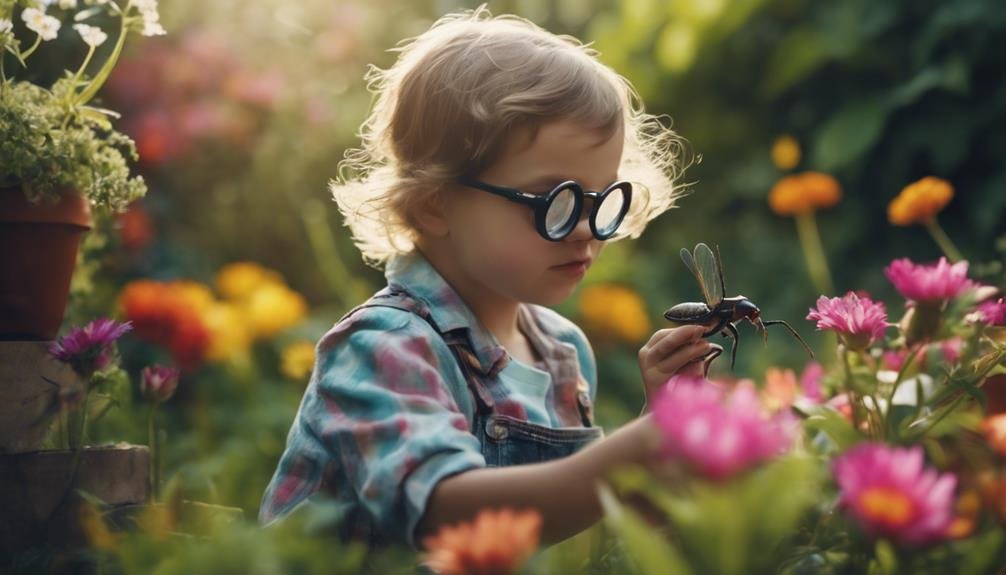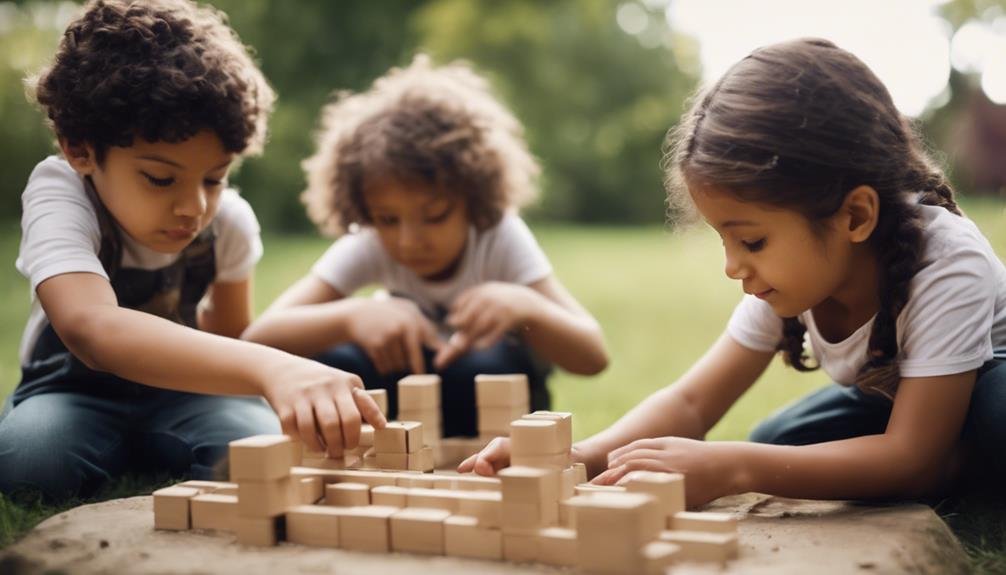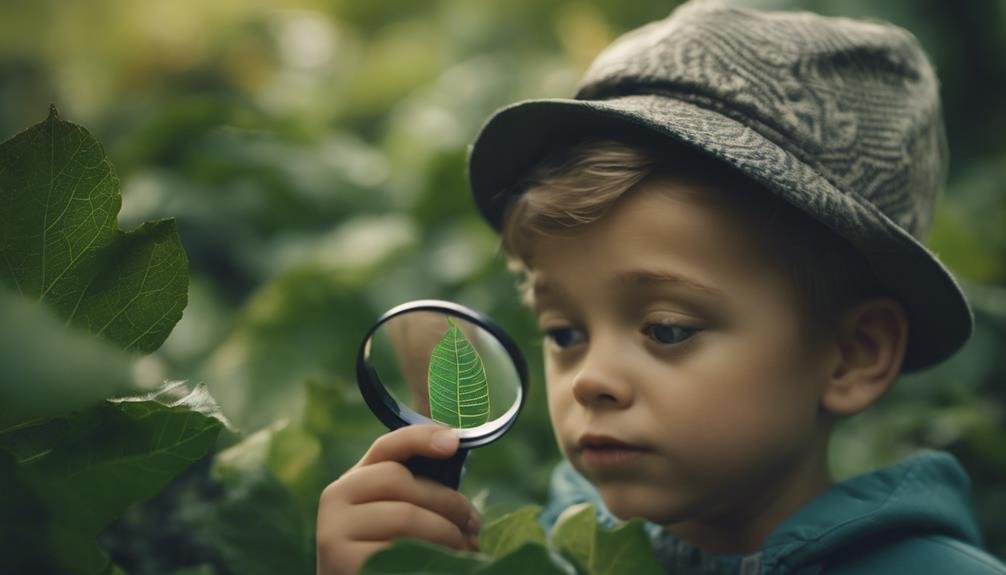"Cherishing Little Steps - A Haven for Baby and Family Journeys"
Fostering a Love for Science in Early Childhood
Imagine science as a seed planted in the fertile soil of a child's mind, waiting to sprout and bloom.
How can you nurture this budding curiosity and foster a love for science in the early years of childhood? There are key strategies and approaches that can pave the way for a lifelong journey of exploration and discovery.
From hands-on experiments to playful integration of STEM concepts, let's explore the diverse ways through which you can ignite a passion for science in young minds.
Key Takeaways
- Early exposure to science builds a strong foundation for lifelong curiosity and learning.
- Hands-on experiments and exploration spark a love for discovery and critical thinking.
- Cultivating curiosity through inquiry-based activities fosters a deep interest in science.
- Integrating STEM into play enhances problem-solving skills and stimulates a passion for science.
Benefits of Early Science Exposure

Discover the wonders of the world through early science exposure and watch your child's curiosity and critical thinking skills flourish like never before! Brain development in the early years is essential, and engaging your child in scientific activities can have a profound impact. By introducing your child to basic scientific concepts, you're laying a strong foundation for their cognitive growth.
As your child explores the world of science, their brain is actively making connections, strengthening neural pathways, and enhancing problem-solving skills. This hands-on approach to learning not only fosters a love for discovery but also sharpens their critical thinking abilities. Encouraging your child to ask questions, make predictions, and experiment cultivates a mindset that values exploration and innovation.
Through early science exposure, you aren't only nurturing a passion for discovery but also equipping your child with the tools to analyze and solve complex problems. Embrace the journey of scientific exploration with your little one, and witness the incredible impact it has on their developing mind.
Importance of Hands-On Learning
Explore on a journey of discovery with your child by immersing them in hands-on learning experiences that ignite their curiosity and foster a deep understanding of scientific concepts. Here's why it's essential:
- Experiential Learning: When your child engages in hands-on activities, they learn by doing, touching, and experiencing science firsthand. This interactive approach helps them grasp abstract concepts more effectively than passive methods.
- Sensorial Engagement: Through hands-on learning, your child uses their senses to explore scientific phenomena. Feeling textures, observing colors, and hearing sounds make science come alive in a way that textbooks simply can't replicate.
- Interactive Experimentation: By conducting experiments and activities themselves, children actively participate in the learning process. This fosters a sense of ownership and curiosity, encouraging them to ask questions, seek answers, and develop a lifelong love for scientific exploration.
Cultivating Curiosity in Children

Spark your child's natural curiosity by encouraging them to ask questions, explore, and investigate the world around them through playful and interactive experiences. Engage your little scientist in inquiry-based exploration where their questions and wonders lead the way. Embrace curiosity-driven learning by nurturing their desire to understand how things work and why they're the way they are.
Encourage hands-on activities that allow your child to touch, feel, and experience science firsthand. Create a safe space for them to experiment, make observations, and draw conclusions. Let them explore the wonders of the natural world through activities like observing bugs in the garden, mixing colors to create new ones, or building structures with everyday materials.
Exploration Through Senses
Engage your child's senses by immersing them in hands-on activities that allow them to explore the wonders of science through touch, sight, sound, and smell. Here are three fun ways to encourage sensory exploration:
- Sensory Experiments: Create a sensory bin filled with different textures like rice, sand, or water beads. Let your child dig in, feel the textures, and discover the science behind how materials interact. This hands-on experience will spark their curiosity and love for scientific exploration.
- Nature Observations: Take nature walks with your child and encourage them to observe the world around them. Listen to the sounds of birds chirping, feel the rough bark of trees, smell the flowers in bloom, and observe the different colors of leaves. These observations won't only enhance their sensory experiences but also deepen their connection to the natural world.
- Sensory Art: Encourage your child to create art using different materials like paint, clay, or even natural elements like leaves and flowers. This tactile experience won't only stimulate their senses but also allow them to express their creativity through a scientific lens.
Integrating STEM in Play

To infuse playtime with STEM learning, incorporate hands-on activities that inspire curiosity and problem-solving skills in your child. STEM exploration can be integrated seamlessly into your child's play by incorporating simple experiments or building projects. Encourage your child to ask questions, make predictions, and test out their ideas through playful learning activities.
For instance, you can set up a mini science lab at home with basic materials like baking soda and vinegar for a fizzing reaction experiment. You could also use building blocks to introduce concepts like balance and stability.
Engaging in STEM activities during playtime not only fosters a love for science but also helps develop critical thinking and analytical skills from a young age. By making STEM exploration a fun and interactive experience, you're laying a strong foundation for your child's future academic success. So, grab some materials, get creative, and watch as your child's natural curiosity and love for learning flourish through playful STEM activities!
Making Science Fun for Kids
Exploring the wonders of science can be an exciting journey for kids when approached through hands-on experiments and interactive activities that ignite their curiosity and creativity. So, how can you make science fun for kids? Here are three playful ways to spark their interest:
- Creative Experiments: Encourage your child to conduct simple science experiments using household items like vinegar and baking soda volcanoes or DIY lava lamps. Let them mix colors, observe reactions, and ask questions to fuel their scientific curiosity.
- Interactive Science Kits: Invest in age-appropriate science kits that make learning fun and engaging. These kits often come with easy-to-follow instructions, allowing kids to explore various scientific concepts through hands-on activities.
- Outdoor Exploration: Take science outdoors! Explore nature, observe insects, birds, or plants, and engage in activities like scavenger hunts or building simple bird feeders. Connecting science to the natural world can make learning exciting and memorable for kids.
Encouraging Scientific Inquiry

Encourage your young scientist to ask questions, observe, and explore the world around them to foster a natural curiosity for scientific inquiry. By promoting inquiry-based exploration, you're setting the foundation for fostering critical thinking skills. Encouraging this curiosity-driven learning not only nurtures their natural sense of wonder but also helps them develop a deeper understanding of the world.
As your little scientist starts on this journey of discovery, provide them with opportunities to explore and investigate. Encourage them to ponder over why things work the way they do, and guide them in finding answers through experimentation. By embracing a spirit of curiosity and encouraging creativity, you're instilling in them a love for learning that goes beyond textbooks.
Practical Science Activities for Families
Get ready to plunge into exciting hands-on experiments and activities that will spark your family's interest in science! Here are three engaging ways to dive in to practical science with your loved ones:
- Outdoor experiments: Take advantage of the great outdoors to explore scientific concepts in action. Set up a nature scavenger hunt to observe and learn about different plants and animals. You can also try creating a DIY weather station using simple materials like a thermometer, rain gauge, and wind vane to track weather patterns in your area.
- Kitchen chemistry: Transform your kitchen into a laboratory with fun and safe experiments. Whip up some homemade slime using household items like glue, borax, and food coloring. Or conduct a simple baking soda and vinegar volcano experiment to learn about chemical reactions while having a blast watching the eruption.
- Science in the garden: Plant a small vegetable or herb garden together and observe the growth process. Discuss the importance of sunlight, water, and nutrients for plants to thrive. You can also investigate the different insects that visit your garden and their role in pollination.
Frequently Asked Questions
How Can Parents Help Children Maintain Their Interest in Science as They Grow Older?
To keep your child's science interest alive, get involved as a parent. Engage in outdoor exploration and hands-on experiments. Invest in STEM toys to make learning fun and interactive. You play an important role!
Are There Any Specific Strategies for Introducing Scientific Concepts to Very Young Children?
Imagine the wonders your little one could uncover through hands-on experiments and outdoor exploration. Engage their curiosity by introducing simple scientific concepts in a playful, interactive way. Watch as their love for science blossoms!
How Can Educators Address the Gender Gap in STEM Fields Starting From Early Childhood?
To address the gender gap in STEM fields from early childhood, you can challenge gender stereotypes and provide early intervention through inclusive activities and role models. Encourage curiosity and exploration to spark interest in science for all.
What Are Some Ways to Incorporate Technology and Digital Resources Into Early Science Education?
Want to jazz up science ed for the little ones? Immerse yourself in interactive apps for hands-on learning! Give virtual experiments a try to spark curiosity. With tech at your fingertips, science fun awaits!
How Can Parents and Caregivers Support Children Who May Struggle With Traditional Science Activities?
When traditional science activities feel tough, remember you can help kids with hands-on experiments, visual aids, outdoor exploration, and creative projects. Encourage curiosity and exploration to make learning fun and engaging!
Conclusion
So there you have it!
By fostering a love for science in early childhood, you're setting the stage for a future filled with curiosity, exploration, and discovery.
Who knew that something as simple as playing with slime or conducting kitchen experiments could lead to a lifelong passion for STEM?
Keep those little scientists curious and watch them grow into the innovators of tomorrow!
Remember, the world is their laboratory – let the experimenting begin!


